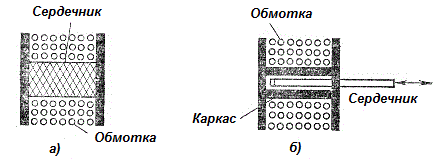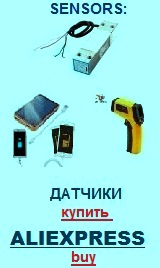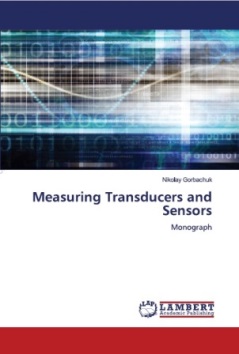Transducers, gauges, sensors - Information portal © 2011 - 2025 Use of material is possible by placing an active link

Inductive displacement transducer
Self-inductance of the coil changes as you approach it magnetically permeable body, so the movement of the body relative to the coil can be detected by a sensitive coil self-induction transmitters that use this principle yavlyayutsya.obychno proximity (Fig. 1a). In addition, there are associated inductive displacement transducers (Fig. 1b), in which the coil core is mechanically connected to the body, the movement of which is measured. Proximity transducers described type are used as a base for the construction of inductive proximity sensors and inductive switches approximation.
русский / english
Home >> Manometers. Pressure gauge >> Inductive displacement transducer
• Information about various converters and sensors of physical quantities, parameters of various physical processes is presented.
• Electrophysical properties and effects in various electrical materials.
• Theory, experimental results, practical application
Figure 1. Inductive displacement transducer: a - non-contact, b - associated
Magnetic displacement transducers.
Converters of this type are based on the principle of change of the magnetic resistance between two or more magnetic coils excited by an alternating current, depending on the movement of the body. The latter fact is the output voltage of the converter. Transformative element is performed so that it can be used in different types of devices, in which the conversion of the measured physical quantity in the movement. This defines the measured value.

The principle of operation of inductive displacement transducers
The principle of operation of inductive converters is based on the dependence of the inductance or mutual inductance of the windings on the position, geometric dimensions and magnetic state of the constituent elements of their magnetic circuit.
From the theory (and mathematical formulas) it follows that the inductance and mutual inductance can be changed by acting on the gnometric dimensions (length, cross-sectional area) of the air section of the magnetic circuit, on the magnetic permeability, on the losses in the magnetic circuit.
Alternating current flowing through the coil creates an alternating magnetic field. When an electrically conductive material (metal, etc.) is placed in it, part of the magnetic field energy is transferred to the metal object. This transmitted energy induces eddy currents (Foucault currents) on the surface of the object. Their value depends on the size, composition of metal, the location of the object relative to the magnetic field. Eddy currents in the object create their own magnetic field, which interacts with the primary field generated by the coil. Due to the effect, the effective inductance of the coil decreases and, as a result, the resonant frequency of the circuit in which the inductance is included changes.
See also:
CONVERTERS, GAUGES, SENSORS
Information, news, advertising


